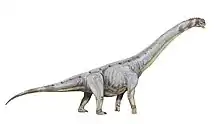Bahariya Formation
The Bahariya Formation (also transcribed as Baharija Formation) is a fossiliferous geologic formation dating back to the early Cenomanian, which outcrops within the Bahariya depression in Egypt, and is known from oil exploration drilling across much of the Western Desert where it forms an important oil reservoir.[1][3][4]
| Bahariya Formation Stratigraphic range: Early Cenomanian[1] ~100–95 Ma | |
|---|---|
 Restoration of some animals found | |
| Type | Geological formation |
| Underlies | El Heiz Fm., El Naqb Fm.[2] |
| Overlies | Basement |
| Thickness | ≈100 m (330 ft)[2] |
| Lithology | |
| Primary | Sandstone |
| Other | Mudstone, siltstone |
| Location | |
| Coordinates | |
| Region | Western Desert |
| Country | |
| Type section | |
| Named for | Bahariya Oasis |
| Named by | Said |
| Year defined | 1962 |
 Bahariya Formation (Egypt) | |
Extent
The Bahariya Formation forms the base of the depression, the lower part of the enclosing escarpment and all of the small hills within.[5] The type section for the formation is found at Gebel El-Dist, a hill at the northern end of the Bahariya depression.[6]
Stratigraphy and sedimentology
Four depositional sequences have been recognised in the Bahariya Formation in the Bahariya depression, separated by three sub-aerial unconformities. The formation was deposited during a period of relative rise in sea level, with each unconformity representing a relative fall in sea level.[1] Each of the individual sequences contains sediments deposited under fluvial, shoreline and shallow marine conditions.
Flora
Thirty different genera are known from Bahariya, including megaflora. Much of the material is yet to be described.[7]
| Vascular Plants | ||||||
|---|---|---|---|---|---|---|
| Genus | Species | Abundance | Notes | Images | ||
| Weichselia | W. reticulata | Dominant plant. | Xerophytic tree fern suggestive of a dry tropical climate. | |||
| Agathis | An Araucarian conifer, now restricted to Australasia. | |||||
| Cladophlebis | A water fern. | |||||
| Liriodendrites | ||||||
| Marsilea | Water fern. | |||||
| Nelumbites | ||||||
Other taxa include Sapindales, Piperaceae, Lauraceae, Platanaceae, Magnoliopsida, Nymphaeaceae, Cornaceae, Proteaceae and Vitaceae not identified at genus level; and miospore and pollen species.
Microfauna and Meiofauna
Foraminifera
| Foraminifera of the Bahariya Formation | ||||||
|---|---|---|---|---|---|---|
| Genus | Species | |||||
| Charentia | C. cuvillieri | |||||
| Flavusella | F. washitensis | |||||
| Mayncina | M. orbignyi | |||||
| Rotalipora | R. cushmani R. reicheli | |||||
| Thomasinella | T. aegyptia T. fragmentaria T. punica | |||||
| Whiteinella | W. archaeocretacea | |||||
Other microorganisms
| Other microorganisms of the Bahariya Formation | ||||||
|---|---|---|---|---|---|---|
| Genus | Species | Images | ||||
| Botryococcus | ||||||
| Coronifera | C. oceanica | |||||
| Cyclonephelium | C. edwardsii C. vannophorum | |||||
| Dynopterigium | D. cladoides | |||||
| Exochosphaeridium | ||||||
| Florentinia | F. cooksoniae F. mantlii | |||||
| Kallosphaeridium | ||||||
| Mudrongia | M. simplex | |||||
| Palaeoperidinium | P. cretaceum | |||||
| Pediastrum | ||||||
| Pseudoceratium | P. anaphrisum P. securigerum | |||||
| Scenedesmus | ||||||
| Spiniferites | ||||||
| Subtilisphaera | S. perlucida S. senegalensis | |||||
| Xiphophoridium | X. alatum | |||||
Invertebrates
Molluscs
| Molluscs of the Bahariya Formation | ||||||
|---|---|---|---|---|---|---|
| Genus | Species | Notes | Images | |||
| Baculites | A heteromorph ammonite with a nearly straight shell. | |||||
| Cardium | A cockle. | |||||
| Exogyra | A reef-forming true oyster associated with solid substrates and warm temperatures. | |||||
| Gastrochaena | A saltwater clam. | |||||
| Neolobites | N. vibrayeanus | A typical rolled ammonite. | ||||
| Nucula | A small saltwater clam. | |||||
| Ostrea | O. flabeata | An edible oyster. | ||||
Crustaceans
| Crustaceans of the Bahariya Formation | ||||||
|---|---|---|---|---|---|---|
| Genus | Species | Notes | Images | |||
| Amphicytherura | A. sexta | |||||
| Anticythereis | A. gaensis | |||||
| Bairdia | B. bassiounii B. elongata |
|||||
| Brachycythere | B. ledaforma porosa | |||||
| Bythoceratina | B. avnonensis B. tamarae |
|||||
| Bythocypris | B. eskeri | |||||
| Cythereis | C. algeriana C. bicornis levis C. canteriolata |
|||||
| Cytherella | C. ovata C. paenovata C. parallela C. sulcata |
|||||
| Fabanella | ||||||
| Looneyella | L. sohni | |||||
| Loxoconcha | L. clinocosta L. fletcheri |
|||||
| Metacytheropteron | M. berbericum | |||||
| Ovocytheridea | O. caudata O. producta O. reniformis |
|||||
| Paracypris | P. acutocaudata P. angusta P. mdaouerensis P. triangularis |
|||||
| Pterigocythere | P. raabi | |||||
| Veeniacythereis | V. jezzineensis | |||||
| Xestoleberis | X. obesa | |||||
Insects
Direct fossils are sparse, though plant leaves with extensive damage from folivorous insects have been documented.
Vertebrates
Cartilaginous fish
Color key
|
Notes Uncertain or tentative taxa are in small text; |
| Chondrichthyes of the Bahariya Formation | ||||
|---|---|---|---|---|
| Genus | Species | Abundance | Notes | Images |
| Aegyptobatus | A. kuehnei | A sclerorhynchiform. |  Modern Gymnura.  Onchopristis tooth. 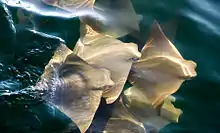 Modern Rhinoptera. 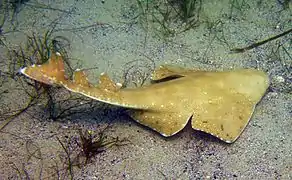 Modern Squatina. | |
| Asteracanthus | A. aegyptiacus | A hybodont shark. | ||
| Baharipristis | B. bastetiae | A sclerorhynchiform. | ||
| Cretodus | C. longiplicatus | A shark. | ||
| Cretolamna | C. appendiculata | A mackerel shark. | ||
| Distobatus | D. nutiae | A sclerorhynchiform. | ||
| Gymnura | G. laterialata | A butterfly ray. | ||
| Haimirichia | H. amonensis | A shark previously classified in the genera Odontaspis, Serratolamna, and Carcharias. | ||
| Isidobatus | I. tricarinatus | A sclerorhynchiform. | ||
| Marckgrafia | M. lybica | A sclerorhynchiform. | ||
| Onchopristis | O. numidus | One complete cranium and associated vertebrae. | A giant sclerorhynchid sawfish. | |
| Peyeria | P. libyca | A sclerorhynchiform. | ||
| Ptychotrygon | P. henkeli | A sclerorhynchiform. | ||
| Renpetia | R. labiicarinata | A sclerorhynchiform. | ||
| Rhinoptera | A batoid ray. | |||
| Schizorhiza | S. stromeri | An unusual sclerorhynchid sawfish that retained its rostral teeth after they were replaced. | ||
| Squalicorax | S. baharijensis | A large shark. | ||
| Scapanorhynchus | S. subulatus | A mitsukurinid similar to the modern goblin shark. | ||
| Squatina | An angelshark. | |||
| Tribodus | T. aschersoni | A hybodont. | ||
Bony fish
Color key
|
Notes Uncertain or tentative taxa are in small text; |
| Osteichthyes of the Bahariya Formation | ||||
|---|---|---|---|---|
| Genus | Species | Abundance | Notes | Images |
| Bawitius | B. bartheli | A giant bichir. | ||
| Concavotectum | C. moroccensis | Possibly synonymous with Paranogmius doederleini. | ||
| Ceratodus | A lungfish. | |||
| Coelodus | A pycnodontid. | |||
| Enchodus | One tooth. | A predatory fish. | ||
| Lepidotes | Isolated scales. | Possibly misidentified from Bawitius bartheli. | ||
| Mawsonia | M. lybica | Considered a "signature taxon" of the formation. | A giant freshwater coelacanth. Species assignation deemed provisional due to the lack of neotype. | |
| Neoceratodus | N. africanus | A lungfish related to the living Australian species. | ||
| Palaeonotopterus | P. greenwoodi | Nomen conservandum of the two Plethodus species previously described. | ||
| Paranogmius | Paranogmius doederleini | One vertebra. | Holotype lost in World War II. Could be synonymous with Concavotectum moroccensis. | |
| Plethodus | P. libycus P. tibniensis |
Holotypes destroyed in World War II, but now believed to have been misidentified Palaeonotopterus greenwoodi. | ||
| Retodus | R. tuberculatus | A lungfish species identified from remains previously assigned to Neoceratodus. | ||
| Saurodon | Identified by Stromer in 1936, but now rejected due to this genus appearing only in post-Cenomanian Europe and North America. Now listed as Ichthyodectidae incertae sedis. | |||
| Stromerichthys | S. aethiopicus | A predatory bowfin relative. | ||
Testudines
| Testudines of the Bahariya Formation | ||||
|---|---|---|---|---|
| Genus | Species | Abundance | Notes | Images |
| Apertotemporalis | A. baharijensis | A small sea turtle. Other unnamed species are also present. | ||
Squamates
| Squamates of the Bahariya Formation | ||||
|---|---|---|---|---|
| Genus | Species | Abundance | Notes | Images |
| Simoliophys | Abundant | First known sea snake, with functional hind legs. Now believed to include elements from different species and at least one of a different, unnamed genus. | ||
Plesiosaurs
Color key
|
Notes Uncertain or tentative taxa are in small text; |
| Plesiosaurs of the Bahariya Formation | ||||
|---|---|---|---|---|
| Genus | Species | Abundance | Notes | Images |
| Leptocleidus | L. capensis | A small plesiosaur that visited brackish or fresh water systems. Though known from both South Africa and England, the Egyptian material lacks diagnostic traits of the genus and is now referred as Polycotylidae incertae sedis. | ||
Crocodyliformes
Color key
|
Notes Uncertain or tentative taxa are in small text; |
| Crocodyliformes of the Bahariya Formation | ||||
|---|---|---|---|---|
| Genus | Species | Abundance | Notes | Images |
| Aegyptosuchus | A. peyeri | A poorly known, possibly stomatosuchid crocodile. | ||
| Hamadasuchus | H. rebouli | A terrestrial, dog-like peirosaurid. It is possible that some material previously attributed to Libycosuchus actually belongs to this species. | ||
| Libycosuchus | L. brevirostris | A terrestrial crocodile of uncertain affinities, possibly related to Notosuchus. | ||
| Stomatosuchus | S. inermis | A complete cranium | A large, flat-headed stomatosuchid with multiple small conical teeth, and possibly a pelican-like throat pouch. The only remains were destroyed in World War II. | |
| Stromerosuchus | S. aegyptiacus | Fragmentary remains | Nomen dubium assigned to material found in 1911, that were badly damaged in 1922 while being shipped to Germany for study. Some material may belong to Aegyptosuchus and other to Stomatosuchus. | |
Sauropods
Color key
|
Notes Uncertain or tentative taxa are in small text; |
| Sauropods of the Bahariya Formation | ||||
|---|---|---|---|---|
| Genus | Species | Material | Notes | Images |
| Aegyptosaurus[3] | A. baharijensis[3] | Partial postcranial skeleton[8] | A titanosaur of about 15 meters. All remains were destroyed in World War II. | |
| Dicraeosaurus | D. hansemanni | Isolated scapula and vertebra | Identified by Stromer in 1932. Subsequently considered a rebbachisaurid, or a third, unnamed titanosaur. | |
| Paralititan[3] | P. stromeri[3] | Partial postcranial skeleton[9] | One of the largest titanosaurs of the Cretaceous, with a 1.69 meters long humerus and an estimated total length of 26 meters. | |
Theropods
Color key
|
Notes Uncertain or tentative taxa are in small text; |
| Theropods of the Bahariya Formation | ||||
|---|---|---|---|---|
| Genus | Species | Abundance | Notes | Images |
| Bahariasaurus | B. ingens[3] | A medium-sized theropod of uncertain affinities. Possibly a megaraptoran, a relative of Deltadromeus, or both. | ||
| Carcharodontosaurus[3] | C. saharicus[3] | A large carcharodontosaurid allosauroid. | ||
| Elaphrosaurus | Material now considered to be indeterminate theropod remains.[3] | |||
| Sigilmassasaurus[3] | S. brevicollis | Previously considered a species of Spinosaurus, or a synonym of S. aegyptiacus. | ||
| Spinosaurus | S. aegyptiacus | Most common dinosaur of the formation. | A large spinosaurid. | |
In addition, there are isolated teeth disputedly assigned to dromaeosaurids, or to abelisaurids.
See also
- List of dinosaur-bearing rock formations
References
- Catuneanu O., Khalifa M.A. & Wanas H.A. (2006). "Sequence stratigraphy of the Lower Cenomanian Bahariya Formation, Bahariya Oasis, Western Desert, Egypt" (PDF). Sedimentary Geology. 190 (1–4): 121–137. doi:10.1016/j.sedgeo.2006.05.010.
- Catuneany et al., 2006, p.122
- Weishampel, David B; et al (2004). "Dinosaur distribution (Late Cretaceous, Africa)." In: Weishampel, David B.; Dodson, Peter; and Osmólska, Halszka (eds.): The Dinosauria, 2nd, Berkeley: University of California Press. Pp. 604. ISBN 0-520-24209-2.
- Macgregor D.S. & Moody R.T.G. (1998). "Mesozoic and Cenozoic petroleum systems of North Africa". In Macgregor D.S.; Moody R.T.G.; Clark-Lowes D.D. (eds.). Petroleum geology of North Africa. Special Publications. 132. Geological Society. pp. 201–216. ISBN 9781862390041.
- Khalifa M.A. & Catuneanu O. (2008). "Sedimentology of the fluvial and fluvio-marine facies of the Bahariya Formation (Early Cenomanian), Bahariya Oasis, Western Desert, Egypt". Journal of African Earth Sciences. 51 (2): 89–103. doi:10.1016/j.jafrearsci.2007.12.004.
- Tanner L.H. & Khalifa M.A. (2010). "Origin of ferricretes in fluvial-marine deposits of the Lower Cenomanian Bahariya Formation, Bahariya Oasis, Western Desert, Egypt". Journal of African Earth Sciences. 56 (4–5): 179–189. doi:10.1016/j.jafrearsci.2009.07.004.
- Ijouhier, Jamale (2016) A reconstruction of the palaeoecology and environmental dynamics of the Bahariya Formation of Egypt. PeerJ Preprints, https://doi.org/10.7287/peerj.preprints.2470v1
- "Table 13.1," in Weishampel, et al. (2004). Page 267.
- "Table 13.1," in Weishampel, et al. (2004). Page 269.
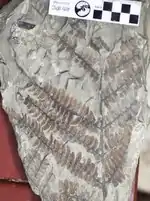

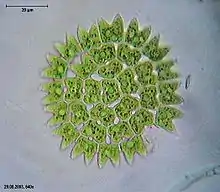
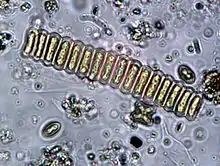

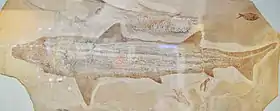
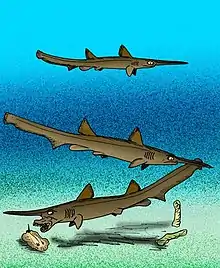


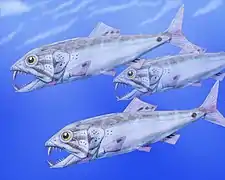




.jpg.webp)

